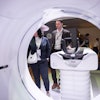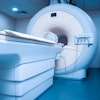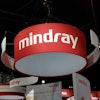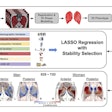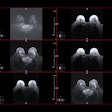SAN FRANCISCO - Radiation dose can be reduced in pediatric CT imaging without compromising image quality by using lower tube voltages, according to CT pioneer Willi Kalender, Ph.D. Dose could potentially be reduced even further if manufacturers tweaked their systems to enable them to scan at lower energies than those commonly used now, he said at yesterday's sessions of Stanford University's International Symposium on Multidetector-Row CT.
Conventional wisdom is that lower kV settings should be used when imaging children to produce studies that deliver less radiation. But one of the problems is that there are no authoritative statements on the optimal energy spectra to be used in CT, and even then, recommendations sometimes fail to make it into clinical practice, he said.
"Although it's accepted that we should try lower kV, about 99% in a recent poll of German sites (said) that they are simply sticking to 120, which is the standard setting, and I assume many do (the same) in the United States," Kalender said.
Kalender has made dose reduction in pediatric CT a particular research focus of late, and presented a paper on the topic at the 2006 RSNA meeting. That study used radiation dose simulations, however. Since then, Kalender's group, from the Institute of Medical Physics at the University of Erlangen-Nürnberg in Germany, has made actual dose measurements of CT imaging at different energies on phantoms and cadavers.
Kalender's group scanned a number of cadavers and phantoms, with a particular focus on the thorax. The group placed into the phantoms various reference materials such as water, iodine, and calcium hydroxyapatite, to simulate the various types of structures and densities that might be encountered in routine CT imaging.
Using a scanner modified to scan at energies as low as 60 kV (Somatom Definition, Siemens Medical Solutions, Erlangen, Germany), the group performed studies at energies of 60, 80, 100, 120, and 140 kV, and measured noise and 3D dose distributions for each energy voltage. The group then assessed the contrast-to-noise ratio per unit dose (CRND) as the parameter for optimal image quality.
The group found that the actual dose measurements closely matched the simulation data that they presented at RSNA 2006. When the group scanned at 80 kV, radiation dose dropped by a factor of three compared with 120 kV, Kalender said. Scanning at 60 kV dropped the radiation dose by another factor of two, he added.
"If you go down from 120 to 80, you have a considerable dose advantage. If you shoot for the same signal-to-noise ratio, you can achieve that at a much lower dose," Kalender said. "If we had 60 kV we would be doing even better."
Kalender concluded by stating that for general soft-tissue pediatric imaging, 80 kV is close to the optimal energy level. For contrast or skeletal studies, the lower tube voltage produces a definite advantage over 120 kV, and 60 kV should also be considered as an alternative, if scanner manufacturers begin making the lower-energy option available on their systems, Kalender said.
By Brian Casey
AuntMinnie.com staff writer
June 14, 2007
Disclosure notice: Mr. Kalender is a consultant for Siemens Medical Solutions.
Related Reading
Teaching parents about CT risks might pare unnecessary scans in kids, December 28, 2006
Radiologists can misinterpret children's lung nodules at CT, May 16, 2006
Pediatric CT won't stop growing, but dose can be minimized, May 8, 2003
Copyright © 2007 AuntMinnie.com
